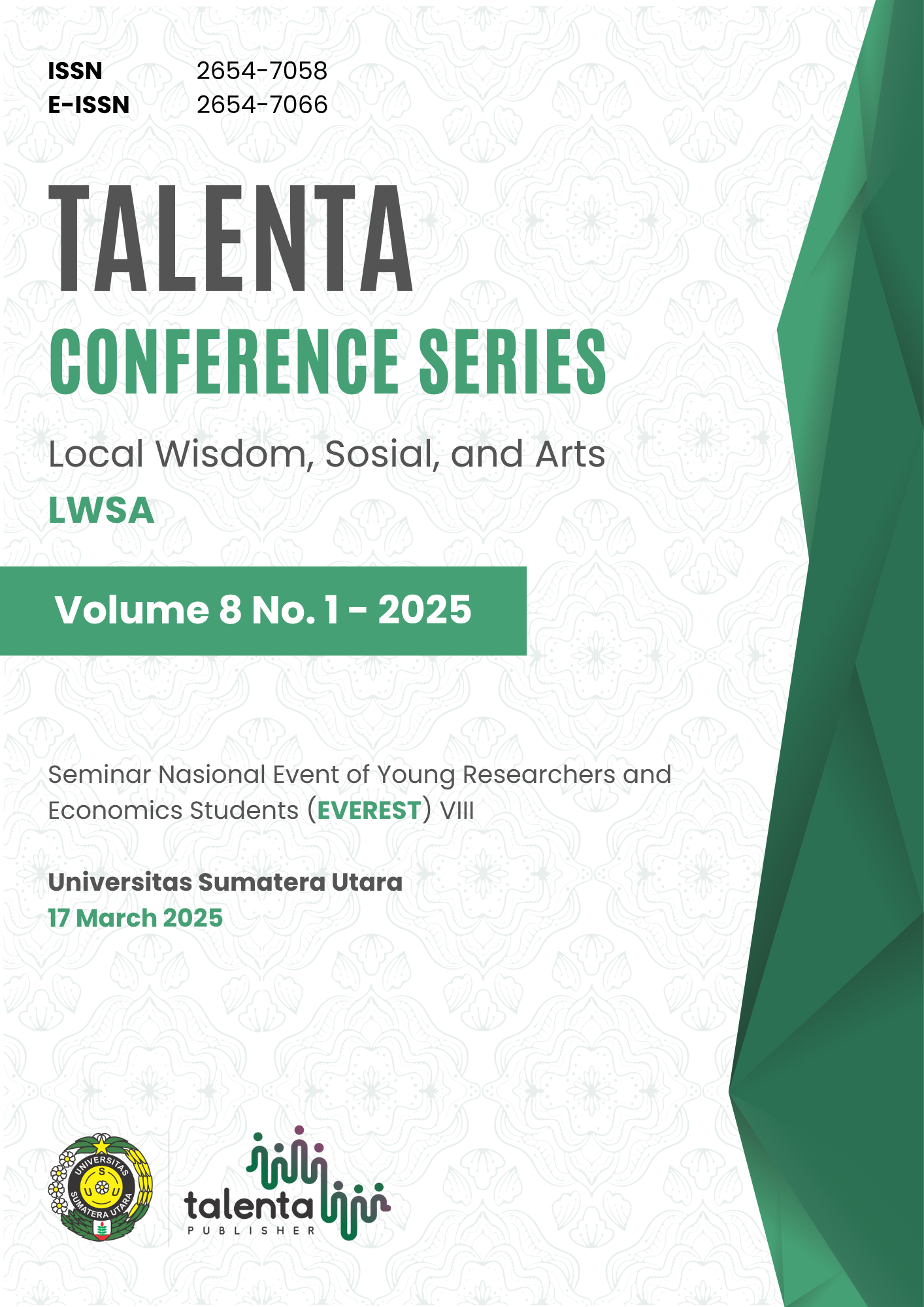The Impact Revitalization Development at Lapangan Merdeka For the People of Medan to Become Environmentally Sustainable Green
| Authors | ||
| Issue | Vol 8 No 1 (2025): Talenta Conference Series: Local Wisdom, Social, and Arts (LWSA) | |
| Section | Articles | |
| Section |
Copyright (c) 2025 Talenta Conference Series  This work is licensed under a Creative Commons Attribution-NonCommercial-NoDerivatives 4.0 International License. |
|
| Galley | ||
| DOI: | https://doi.org/10.32734/lwsa.v8i1.2357 | |
| Keywords: | Revitalization Cultural Heritage Economy Green Open Space | |
| Published | 2025-02-28 |
Abstract
The revitalization of Medan's Merdeka Square, covering 4.88 hectares, aims to restore its cultural heritage value and revitalize the social and economic aspects of the surrounding area. Revitalization focuses on protecting key elements, such as historical fields, trembesi trees, and cultural memories, while adapting the space for modern needs. Phase 1 of the project involves significant groundwork, including casting 1,818 piles, excavating 152,147.47 m³ of soil, and distributing it to three locations: TPA Terjun, the Islamic Center, and other sites. As Medan faces environmental challenges stemming from urban development prioritizing economic growth over green areas, the concept of sustainable green infrastructure has gained prominence. Revitalized green open spaces (RTH) in urban areas function as gardens, urban forests, recreational spaces, sports facilities, and more. The revitalized Merdeka Square will transform into a green infrastructure hub, expanding its green space from 18,520 m² to 21,580 m². This development will preserve its status as a cultural heritage site while hosting cultural arts, music, and culinary events. Using a qualitative method with both primary and secondary data, this study examines the importance of Merdeka Square’s revitalization as urban green infrastructure and its impact on the well-being of Medan’s residents.






